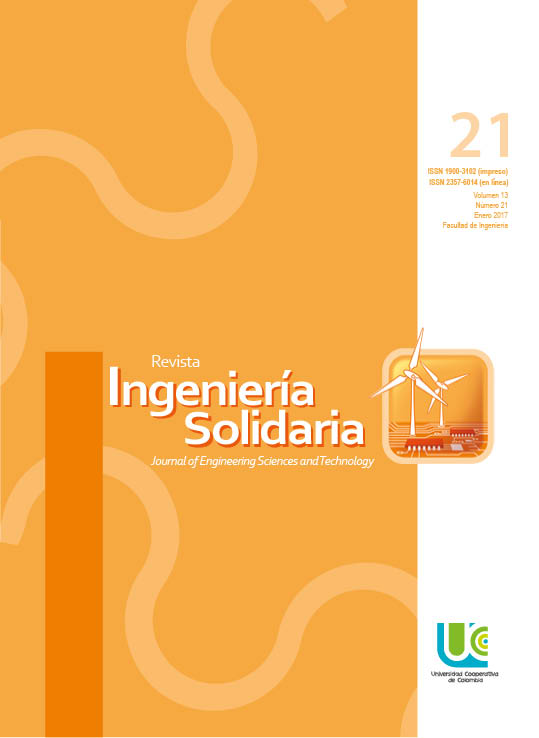Engineering Students´ Academic Performance Prediction using ICFES Test Scores and Demo-graphic Data
Introduction: This paper is part of a research project that aims to construct a predictive model for students’ academic performance, as result of an iterative process of experimentation and evaluation of the pertinence of some data mining techniques.
Methodology: This paper was written in 2016 in the Universidad El Bosque, Bogotá, Colombia, and presents a comparative analysis of the performance and relevance of the J48 and Random Forest algorithms, in order to identify the most influential demographic and icfes score variables, as well as the classification rules, to predict the first year academic performance of the Engineering Faculty students, in Universidad El Bosque, Bogotá, Colombia.
Results: The analysis process was carried out on 7,644 students’ records, and it was developed in two phases. Firstly, the data needed to feed the mining process was extracted and prepared. Secondly, the data mining process itself was implemented through preprocessing data and executing the classification algorithms available in Weka. Some significant variables and rules to predict academic performance are found, according to the studied population characteristics.
Conclusions: The academic risk seen as the cause of the desertion phenomenon must be studied as a phenomenon itself. Establishing its causes facilitates the creation of preventive strategies for the accompaniment of students through their process, aimed to mitigate the risk of both phenomena.
How to Cite
License
Copyright (c) 2017 Ingeniaría Solidaria

This work is licensed under a Creative Commons Attribution-NonCommercial-NoDerivatives 4.0 International License.
Cession of rights and ethical commitment
As the author of the article, I declare that is an original unpublished work exclusively created by me, that it has not been submitted for simultaneous evaluation by another publication and that there is no impediment of any kind for concession of the rights provided for in this contract.
In this sense, I am committed to await the result of the evaluation by the journal Ingeniería Solidaría before considering its submission to another medium; in case the response by that publication is positive, additionally, I am committed to respond for any action involving claims, plagiarism or any other kind of claim that could be made by third parties.
At the same time, as the author or co-author, I declare that I am completely in agreement with the conditions presented in this work and that I cede all patrimonial rights, in other words, regarding reproduction, public communication, distribution, dissemination, transformation, making it available and all forms of exploitation of the work using any medium or procedure, during the term of the legal protection of the work and in every country in the world, to the Universidad Cooperativa de Colombia Press.
C. Guzman et al., Deserción estudiantil en la educación superior colombiana. Metodología de seguimiento, diagnóstico y elementos para su prevención, Bogotá: Ministerio de Educación Nacional,2009, p. 156. Available: http://www.mineducacion.gov.co/sistemasdeinformacion/1735/articles-254702_libro_desercion.pdf
MinEducación, “Pruebas Saber”, Mineducación, Aug. 26, 2010. Available: http://www.mineducacion.
gov.co/1759/w3-article-244735.html
Centro de Estudios sobre Desarrollo Económico, cede, “Informe Determinantes de la deserción. Informe mensual sobre el soporte técnico y avance del contrato para garantizar la alimentación,
consolidación, validación y uso de la información del spadies”, Centro de Estudios sobre Desarrollo
Económico, cede, Facultad de Economía, Universidad de los Andes, Bogotá, Colombia, Feb. 14,
N. Suárez-Montes & L. B. Díaz-Subieta, “Estrés académico, deserción y estrategias de retención de
estudiantes en la educación superior”, Revista de Salud Pública, vol. 17, no. 2, pp. 300-313, 2015. doi:
15446/rsap.v17n2.52891
M. Astudillo, “Factores de riesgo asociados a la deserción estudiantil en la Universidad icesi”, Tesis
de grado, Facultad de Ciencias Administrativas y Económicas, Programa de Economía, Universidad
icesi, Santiago de Cali, Colombia, Mayo, 2013. Available: https://repository.icesi.edu.co/biblioteca_digital/bitstream/10906/71417/1/factores_riesgo_asociados.pdf
J. C. de la Rosa, R. Linero, I. Meriño & O. Rodríguez, “Acompañamiento de estudiantes en alto riesgo académico”, in Encuentro Internacional de Educación en Ingeniería acofi 2014, Cartagena de Indias, Colombia, Oct. 7-10, 2014, pp. 118-119.
F. Barrero, C. Barrero, H. Borja & M. Montaño. “Factores de riesgo asociados a la deserción estudiantil universitaria en programas de pregrado de la Universidad de San Buenaventura, Bogotá (2009-
”, Academia y Virtualidad, vol.2, no. 8, pp. 60-72, 2015. Available: http://revistas.unimilitar.edu.
co/index.php/ravi/article/view/1423. doi: //dx.doi.org/10.18359/ravi.1423
E. P. Ibarra García & P. Medina Mora, “Model prediction of academic performance for first year students”, in micai 2011: 10th Mexican International Conference on Artificial Intelligence, Puebla, Mexico, Nov. 26-Dec. 4, 2011, pp. 169-174.
S. Taruna & M. Pandey, “An empirical analysis of classification techniques for predicting academic performance”, in 2014 ieee International Advance Computing Conference (iacc), Gurgaon, India, Feb. 21-22, 2014. Available: http://ieeexplore.ieee.org/document/6779379. doi: 10.1109/IA-dCC.2014.6779379
G. Gray, C. McGuinness & P. Owende, “An application of classification models to predict learner
progression in tertiary education”, in 2014 ieee international Advance Computing Conference
(iacc), Gurgaon, India, Feb. 21-22, 2014. Available: http://ieeexplore.ieee.org/document/6779384. doi:
1109/IAdCC.2014.6779384
N. Thai Nghe, P. Janecek & P. Haddawy, “A comparative analysis of techniques for predicting academic performance”, in 37th Annual Frontiers in Education Conference. Global Engineering: Knowledge Without Borders - Opportunities Without Passports, Milwaukee, Wisconsin, Oct. 10-13, 2007. Available: http://iee-explore.ieee.org/document/4417993. doi: 10.1109/FIE.2007.4417993
S. M. Merchán Rubiano & J. A. Duarte García. “Formulation of a predictive model for academic
performance based on students’ academic and demographic data”, in 2015 ieee Frontiers in Education Conference (fie), El Paso, Texas, Oct. 21-24, 2015. Available: http://ieeexplore.ieee.org/document/7344047. doi: 10.1109/FIE.2015.7344047.
S. M. Merchán Rubiano & J. A. Duarte García. “Analysis of data mining techniques for constructing a predictive model for academic performance”, Latin America Transactions, vol. 14, no. 6, pp. 2783-2788, 2016. Available: http://ieeexplore.ieee.org/document/7555255. doi: 10.1109/TLA.2016.7555255.
S. M. Merchán Rubiano & J. A. Duarte García, “Analysis of data mining techniques for constructing a predictive model for academic performance”, in unesco-unir ict & Education Latam Congress
, Online, June, 22-24, 2016, pp. 39-48.
Machine Learning Group at the University of Waikato, Weka 3: Data Mining Software in Java,
The University of Waikato, Hamilton, New Zealand. Available: http://www.cs.waikato.ac.nz/ml/weka












